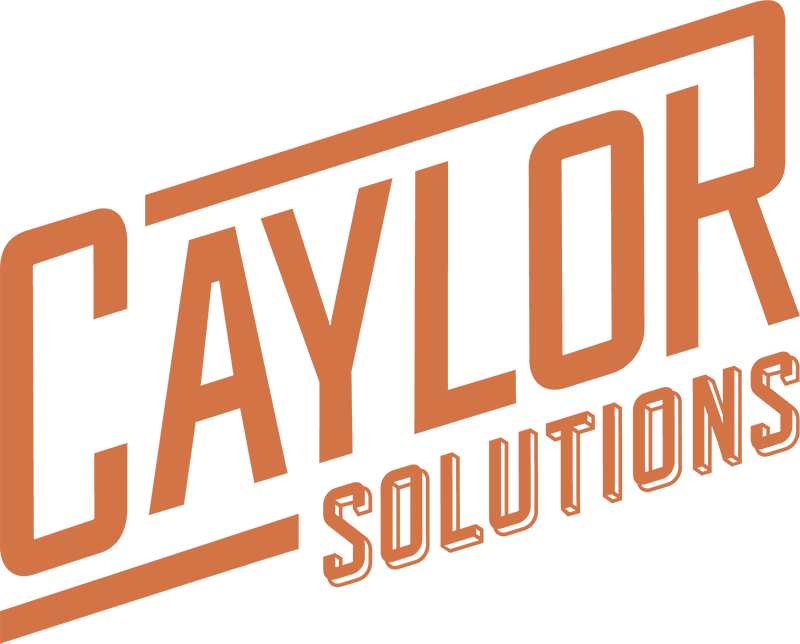Do you ever wish you could clone yourself or certain members of your enrollment marketing team? I’ll bet you do, especially when thinking through your content strategy.
There’s no doubt that your investment in content is incredibly time-consuming, from development to publishing, promotion and analysis.
But it’s worth it.
Why Your Content Strategy Is So Important
You know from your research and personal experience that a strong content strategy pays dividends. It’s still true that “content is king,” more than two decades after Bill Gates told us it would be.
He predicted that all companies and organizations that wanted to succeed on the internet would have to think beyond delivering goods and services via the new medium. They would have to behave as publishers.
That has never been more true than it is today. From websites to blogs, email, social media, apps and all other digital media delivered online, your institution has evolved from an educational content provider serving students into a content publisher also serving the public.
This public service now serves as the foundation of your digital marketing funnel.
An advertisement isn’t enough to move the needle meaningfully anymore, nor is simply having a repository of information your prospects have to request. To reach them, you have to push information out to them – stories, tips, behind-the-scenes details, social proof.
All those publishing activities, in conjunction with or in between advertising campaigns, constitute your content strategy.
It’s a lot of work. So today, I’d like to do you a favor and suggest the next best thing to cloning yourself: saving lots of time by automating your content strategy.
Breaking Down Content Strategy
Before we get into automation, let’s break down what part of your overall marketing strategy we’re focusing on here.
“Marketing automation” is a fairly broad topic, covering some student recruitment functions we won’t get into in this article, e.g. lead generation tied to CRM software.
Our focus will be on content. More specifically, the part of your marketing strategy that involves publishing content for the purpose of attracting your target audience, primarily organically (rather than through paid media), and inspiring them to take action.
These components include:
- Sourcing content to reference or for curation.
- Selecting focus keywords to match organic search terms/questions.
- Original content creation.
- Content editing, search engine optimization and publishing.
- Public promotion (social media) and delivery to email lists.
- Content performance analysis.
Rather than drill down into what each component entails, I’ll be focused on which ones you can and should automate, and give you at least one recommendation for a pro tool that will help you do it.
First, let’s address the elephant in the room:
“We’ve got our process, and we’re doing just fine. Why bother to learn new automation tools?”
Short answer: sooner or later, you won’t be able to afford not to.
Why Automate?
The content publishing game is no longer about who’s got the best content. It’s about who does the best job reaching their prospects with the most relevant content. That’s a critical difference.
You may be producing more high-definition video, publishing more blog posts, covering more social media channels than the colleges and universities you’ve identified as competitors. But if they’re doing a better job making their audiences feel the content matters, they win.
This is because, since around the turn of the 21st century, your prospects have become increasingly consumer savvy. Today, they consume the content of multiple colleges and universities, apply to several, and enroll at the one that seems most relevant to their goals.
It happens lightning fast, making it ever-more essential to deliver relevant content to active prospects:
“The marriage of colleges and technology has … increased the number of applications students are submitting. Unfortunately, there aren’t that many more students to go along with the big increase in applications. While applications have increased by 108% percent from 2001 to 2014, the number of high school graduates has increased by only 11.6%.”
– Jon Boeckenstedt, Vice President of Enrollment Management, Oregon State University (formerly with DePaul University)
To stay competitive, you have to keep your eye on the ball and provide relevant content all the way from the top of the funnel to the bottom.
The trouble is, you don’t have the time or the resources to manually a) produce great content b) at a high frequency and c) create a sense of relevance by customizing your content by channel and applicant status.
Automation is the key.
As you’ll see below, automation tools streamline the minutiae of content strategy execution so that you can keep your focus where it belongs: on delivering content with the highest possible relevance to your target audiences.
6 Tasks You Can and Should Automate
Let’s take a huge chunk out of your content development time by automating the following:
- Content Discovery
- Proofreading
- Web Publishing/SEO
- Social Media Posting
- Email Marketing
- Analysis Reporting
Content Discovery
Recommended Tool: Google Alerts
What are the terms you’re consistently Googling, either to find content ideas or resources to curate and share? Any time spent on reminding yourself of content angles you could take and restarting the search for new material is time you could be spending creating.
Google Alerts allows you to plug in all those search terms exactly once, and then let Google do the work of bringing new resources to your email inbox.
One of the most important terms you should create a Google Alert for is the name of your institution. You don’t want to miss the boat on sharing any good news about your school reported by third parties.
(You also want to be aware of any bad news, of course.)
If you want to get a little more advanced with this, I also recommend Feedly. This is a whole platform dedicated to curating and organizing relevant content for you rather than filling up your email inbox.
There’s a free version of Feedly that allows you to follow up to 100 resources. Above that, fees are reasonable.
Proofreading
Recommended Tool: Grammarly
When you read over written digital content, your focus should be on what matters most: quality, clarity and relevance. Checking your work for grammar and spelling errors is a time-consuming, secondary concern.
Thankfully, tools like Grammarly do most of the proofreading work for you, even as you type. It isn’t perfect. Sometimes it misunderstands the context (for example, it redlined “over written” above, thinking it should be a single word), but it’s still a huge time-saver.
The beauty of Grammarly is that it errs on the side of caution. If there’s a possible error, you’ll see it clearly marked and can quickly accept its recommended change or ignore it. While the old MS Word grammar check feature didn’t seem worth its salt, I find Grammarly to be just as helpful as spell checks.
Web Publishing & SEO
Recommended Tool: WordPress with Yoast SEO
“Automatic publishing” is kind of a misnomer. It’s not as though there’s a program that automatically reaches into your document files, selects multimedia and posts it on the Web (not dependably, anyway).
What I’m talking about here is really automatic formatting, scheduling and optimization for search engine discoverability.
Formatting and Scheduling
This may seem obvious to you at this point that content publishing today requires zero knowledge of coding languages, e.g. HTML, Javascript, etc.
But even in recent years, I’ve experienced times when I couldn’t get content to appear just as I wanted and had to manipulate the backend code to get it just right. That’s not ideal.
WordPress has long been on the forefront of making these situations more and more rare, as it provides a platform for powerful user-friendly tools that simplify the publishing process
The free Gutenberg editor is easy to use, even before adding any special plugins. You can create modern-looking pages and posts with multimedia that automatically translate into mobile layouts.
WordPress also allows you to schedule posts if you don’t want to publish immediately. Of course, there are tools that allow you to coordinate publishing with content promotion as well; more on that under Social Media Promotion below.
Search Engine Optimization
The other “don’t leave home without it” plugin I recommend is Yoast SEO.
With Yoast, all you have to do is type in your focus keyword while viewing your post/page in the WordPress editor, and Yoast will automatically analyze your page or post and tell you exactly what you need to do to optimize your content around that keyword.
It may suggest you include the keyword in a few more headlines, include it in your meta description (what shows up on the Google search results page), add it to your title or use it in the first paragraph, etc.
Yoast is an amazing time saver compared with the alternative. The only equivalent would be to go through a manual checklist of keyword usage and placement. It would be too tempting to skip such a tedious process, leaving your content far less discoverable via organic search.
Social Media Posting
Recommended Tool: CoSchedule
There are essentially two types of social media posting:
- Social media posts, tweets, Story updates, etc., can be pieces of standalone micro-content. These little blurbs you toss out to your audience to try to generate engagement represent the daily activities of your social media manager(s).
- Often, that micro-content is actually meant as a promotion of a piece of core content. The purpose is to connect users back to something more substantial: a webpage, blog post, piece of gated content, or other digital publication you control.
A strong content strategy requires a high posting frequency of both types, and there’s no reason to automate one and not the other.
For example, many managers use a tool to load micro-content and automate daily posts, but promotion of core content (e.g. this week’s blog post) is done manually. All of this can and should be automated.
CoSchedule (which is available as, you guessed it, a WordPress plugin) has become my favorite tool to automate our social media presence for Caylor Solutions.
The full suite allows you to schedule core content publishing (to WordPress) and set up automatic promotions and other social media posts using a single calendar-style interface. There are content management/organizational tools as well that make it a really great resource.
There are other great tools, like HootSuite and Buffer, that have similar functions. If you’re already using one and more comfortable with it, great. Let me just encourage you to make sure you’re getting the most out of your existing tools and automating all you can.
Email Marketing
Recommended Tool: Sharpspring
The topic of email marketing is broad. Rather than go deeply into email strategy in this article, I’m assuming a couple of things:
- Your marketing team utilizes at least two email lists: one or more for “outsiders” (prospects/parents) and one or more for “insiders” (current students/alumni).
- You use your email lists to publish email content, promote core content, or both.
The above two points represent the minimum requirements of a content strategy with personalized email. Instead of a one-size-fits-all approach, you have lists that receive communications tailored to them.
As your efforts in this area get more sophisticated – as they must if you’re going to stay competitive (see the Boeckenstedt quote above) – so does your need for automation.
Behavior-based Email
We’ve used Sharpspring to help clients get serious about personalized email content. Among other features, it powers what’s called behavior-based email. If a prospect takes a certain action, you have different content customized to that action.
In general, the idea is that you don’t speak to someone whose behavior indicates they’re a casual inquirer the same way you would someone with a high level of interest in applying.
To be more specific, these are some of the behaviors to which you should respond with different content:
- Downloading a resource you have provided, e.g. ebook or white paper.
- Filling out a form to request info about your institution.
- Signing up to attend an event.
- Clicking a link in a central campaign to indicate interest in a specific major.
- Purchasing merchandise from the online campus store.
- Initiating a purchase but abandoning the cart.
- Submitting an application to your school.
With tools like Sharpspring, this can get even more sophisticated. You can set up automatic responses based on behaviors on social media, e.g. using your hashtag, responses to inaction after a long period of not opening your emails, and more.
It is both absolutely essential to press ever-further down this road of personalized communication, and absolutely impossible to do it well without automation.
Again, if you’re more comfortable with other tools such as Keap, Hubspot or Marketo, great. Use what you know.
Analysis Reporting
Recommended Tool: Google Analytics
I’m going to make another assumption here, which is that you are not only publishing content but analyzing its effectiveness, at least on occasion.
You know what they say about assuming … but this article isn’t about convincing you that analysis is important for demonstrating ROI. It’s about helping you set up automatic reporting so that you can essentially set up your tracking and just watch the results come in.
Google Analytics does exactly that. Once you set it up to tell you everything you want to know about your website’s traffic – the referral channels, geolocations, changes over time, etc. – you can set it up to repeat that report, drop it into a spreadsheet, and email you when it’s ready.
Pretty cool, eh?
Yes, it takes a little work to set this up, but it will save you a ton of time in the long run. You might want to get help from your IT department to get started.
3 Tasks You Can’t Automate
There are three aspects of content publishing that you can’t really automate:
- Keyword Selection
- Content Planning
- Content Creation
Yes, there are tools out there that can automatically generate keyword lists, questions to drive topics and even “write” (or “spin”) content for you. Some of those may work in other industries.
But in higher education, I would argue that mapping out your content strategy and creating content must be essentially manual activities.
Keyword Selection
I always suggest brainstorming your target audience’s frequently-asked questions. From there, use some kind of keyword research tool to determine your visitors are asking those questions – what specific terms they’re typing into search engines.
If you don’t have a paid tool like SEMrush or Ahrefs, Google Keyword Planner is free and works pretty well for this.
Content Planning
Out of your FAQ brainstorm should come topic categories (for blogs, email newsletters, social media, gated content like ebooks, etc.) and an editorial calendar.
Some of the above tools, like CoSchedule, may help you organize content, but I don’t know of any program that will literally plan it out for you.
Content Creation
No matter how impressive AI has gotten, there is still no substitute for human-to-human communication.
This is especially true in higher ed. The moment an institution like yours, built on meaningful academic relationships, appears phony or out of touch, it’s lost all credibility. I would never recommend using a content spinner just to keep your content quantity up.
When to use human touch vs. automation in your content strategy? It’s a matter of instinct.
When it comes to automation, the best rule of thumb is the marketing golden rule: Market to others as you would market to yourself.
If you were your prospect, would you want to receive content that is clearly created for someone else? Of course not.
So keep your eye on personalizing communication to as many personas as possible – and automate the rest of it.
People don’t really care about where you get your ideas, or whether your grammar is perfect (unless it’s distracting), or if your publishing formats are hand-crafted, social media posts are always written in the moment, and emails are sent manually … so why should you?
I’d like to help you save a whole lot of time while making your content strategy far more effective. If you need a hand, just let me know.
Looking for Enrollment Marketing Content that Works?
You’re in luck! We’ve curated 25 awesome ideas inspired by top higher ed institutions across the country and put them in one handy guide: 25 Ideas for Great Admissions Content.

-
- 25 enrollment marketing content ideas you might never have considered before
- Guidance on how to use each one for best results
- Brief discussion on why they work to help you sell these ideas to your team
Get inspired.
Get enrollment results.
Get 25 Ideas for Great Admissions Content.
Download your copy today!
Featured image by Fizkes via Adobe Stock












